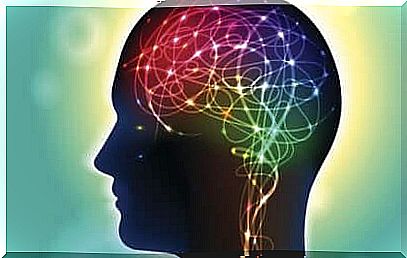The Neurosciences Of Mistrust And Their Cost

The neuroscience of mistrust tells us that our brains are designed to sense dangers and threatening stimuli. Now, in recent years, this mechanism has been a bit more refined. Phenomena, like fake news, for example, cement what is already called the culture of mistrust.
Is it true that we are more and more suspicious? It’s possible. And that this is the case is by no means an advantage. We walk with lead feet and must have filters to separate truth from lies.
Let’s face it, nothing is as sad as a lack of confidence. Mistrust creates distances between us. It even makes us doubt our institutions and feeds conspiracy theories.
The feeling of mistrust, moreover, affects our psychological health. It is a reality that we do not talk about much. Because, although our brain has mechanisms to detect risks and threats, its real priority is social connection. We are gregarious creatures: we need the group to survive, to be excited, to share, to be and to build.
The seed of distrust causes stress and also builds walls for our connection. Human beings are capable of the best things when they work together, when we are able to combine synergies and mutual trust to move forward.

What are the neurosciences of mistrust?
To understand what the neurosciences of mistrust are, we will give several examples.
We’ve all fallen into the false news trap once. Someone sends us a piece of news, we read it, we are surprised, we consider it valid and we share it with someone else. Later we find out the lie, and it bothers us, we feel naive.
When this same thing is repeated several times, something changes in us. We become skeptical and even less receptive. There, in the bowels of our wonderful brain, something has changed.
On the other hand, almost the same thing happens in our relationships. When someone important violates our trust, we feel a loss that goes beyond anger or boredom. What we are feeling is emotional pain.
These two situations show us that at the cerebral level, certain variations are orchestrated. These negative and uncomfortable feelings that we experience affect our mood. We can even change our behavior.
We then become stricter and don’t trust people so much in order to avoid further disappointments. Now, what does the neuroscience tell us about mistrust? Let’s see this together in the rest of this article.
Trust and mistrust are located in different parts of our brain
We could talk about the confident brain and the suspicious brain. The first is located in the area of the prefrontal cortex, an area where processes such as higher thinking, executive functions such as attention, thinking, deduction, discernment, empathy are associated.
- Confidence releases powerful neurochemicals like oxytocin in our brains. We are not mistaken if we say that this dimension is one of the most transcendent for the human being. Confidence comforts us, makes us feel good.
- On the other hand, the neurosciences of mistrust indicate that this state starts from a more primitive mechanism. When we experience it, the amygdala and other regions of the limbic system are activated.
- The brain is suspicious as much as stress: it is a state that makes us release cortisol. We thus reduce our critical sense, as well as our own empathy.
Mistrust prompts us to be more careful. However, in some cases, this inability to think, reason, and see things from a greater perspective tends to block, leading to more rigid and even aggressive behavior.

Dimensions to be taken into account in the “culture of mistrust”
It may be true. We may live in the midst of the culture of mistrust. May it be difficult for us every day to believe everything we are told, what we read and even what surrounds us. We underlined this at the beginning.
Whether it is happening or we perceive it that way is a sad and very negative fact for society and for ourselves. The neurosciences of mistrust tell us that we need to reverse this state. The experience of this sensation comes at a cost, the brain experiences this sensation as something stressful.
Not being able to trust those around us, what we read on a daily basis, or what our leaders or public institutions tell us, plunges us into a state of constant uncertainty and discomfort. We then live on the defensive.
For this reason, we have to take into account the following keys.
Some thoughts to consider
- Mistrust should focus on a specific situation or on a specific person, on the things that are causing the problem, the disappointment or the deception. Let’s not generalize just for fun.
- We cannot go through life with an all-or-nothing approach. People are fallible, society is not perfect, mistakes exist, and all of this should be taken for granted. Just because we’ve been lied to once doesn’t mean it will happen every day.
- If you act with suspicion, you will receive suspicion. Our most genuine attitude towards others should be trust. It is only when we trust others that others trust us.
- Don’t get carried away by peer pressure. Often times those around us encourage us to be suspicious, to close our ears, eyes and hearts to many things and people around us. We need to avoid conditioning and think for ourselves.
In conclusion, nothing is so important in times of difficulty as trusting yourself. It is a dimension as vital for the human being as is the oxygen or the ground which is under our feet. We are able to generate confidence and feel it again.









